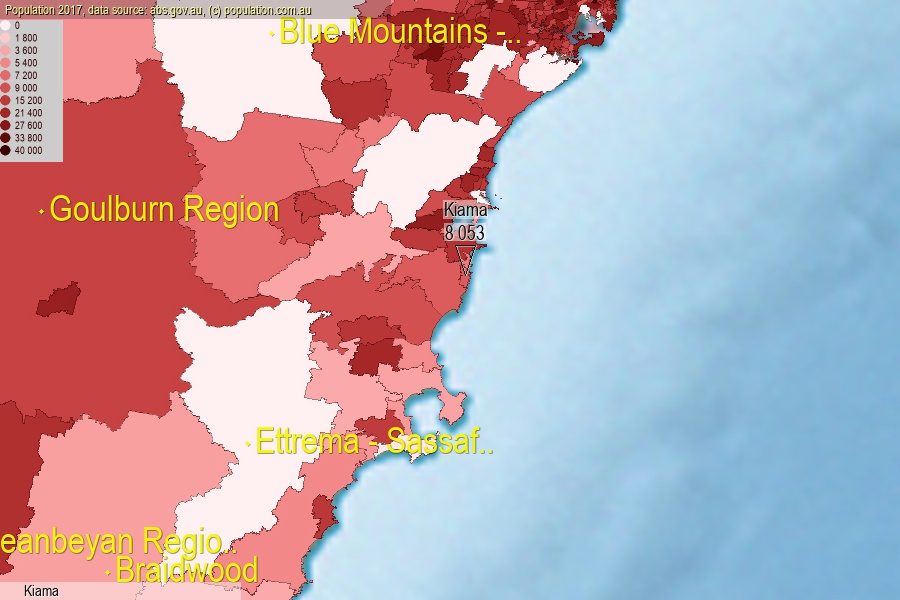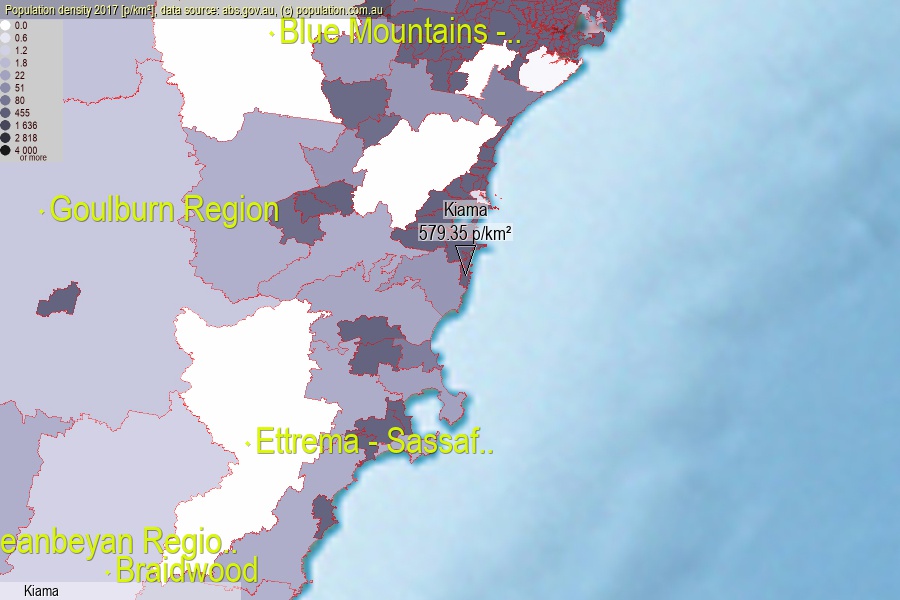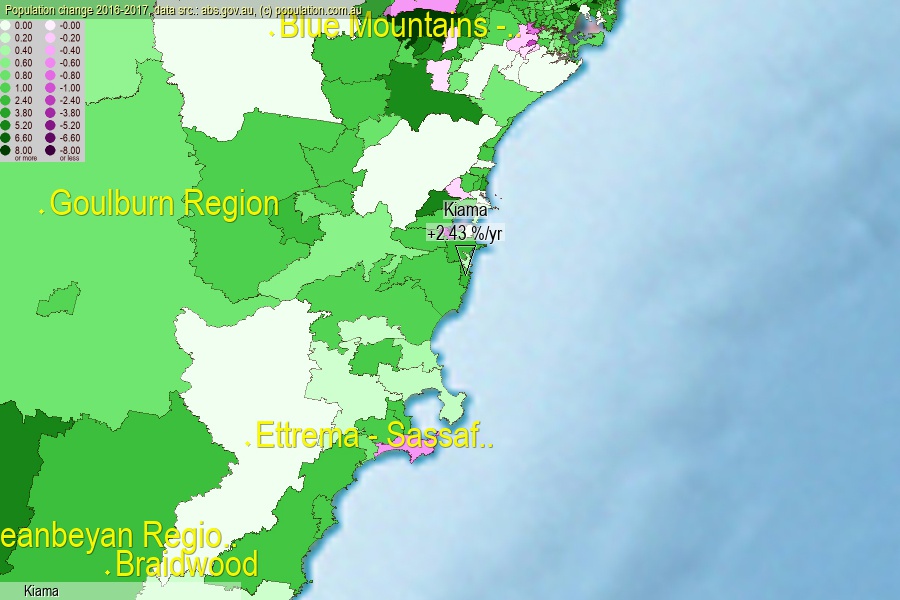 population.com.au
population.com.auLast official estimated population of Kiama (as Statistical Area Level 2) was 8 053 people (on 2017-06-30)[2]. This was 0.03% of total Australian population and 0.101% of NSW population. Area of Kiama is 13.90 km², in this year population density was 579.35 p/km² . If population growth rate would be same as in period 2016-2017 (+2.43%/yr), Kiama population in 2025 would be 9 758. [0]



Click to enlarge. Kiama is located in the center of the images.
Population [people], population density [p./km²] and population change [%/year] [2]
View borders » (new window) [4]
[1991-1992] +0.78 %/Yr.
[1992-1993] +1.13 %/Yr.
[1993-1994] +1.31 %/Yr.
[1994-1995] +1.07 %/Yr.
[1995-1996] +0.95 %/Yr.
[1996-1997] +1.08 %/Yr.
[1997-1998] +1.17 %/Yr.
[1998-1999] +1.03 %/Yr.
[1999-2000] +4.40 %/Yr.
[2000-2001] +2.03 %/Yr.
[2001-2002] +1.70 %/Yr.
[2002-2003] +0.79 %/Yr.
[2003-2004] -0.74 %/Yr.
[2004-2005] -0.23 %/Yr.
[2005-2006] -0.19 %/Yr.
[2006-2007] +1.39 %/Yr.
[2007-2008] +1.61 %/Yr.
[2008-2009] +2.79 %/Yr.
[2009-2010] +1.84 %/Yr.
[2010-2011] +1.78 %/Yr.
[2011-2012] +0.42 %/Yr.
[2012-2013] +0.98 %/Yr.
[2013-2014] +1.84 %/Yr.
[2014-2015] +1.26 %/Yr.
[2015-2016] +0.94 %/Yr.
[2016-2017] +2.43 %/Yr.
[0] Calculated with linear interpolation from officially estimated population
[1] Read more about SA2 and Australian Statistical Geography Standard (ASGS) on abs.gov.au
[2] Population data from Australian Bureau of Statistics (Population and density: 2017; change: 2016-2017)
[3] Digital Boundaries: Australian Statistical Geography Standard (ASGS) 2016.
[4] Border coordinates are simplifyed using Ramer-Douglas-Peucker algorithm.